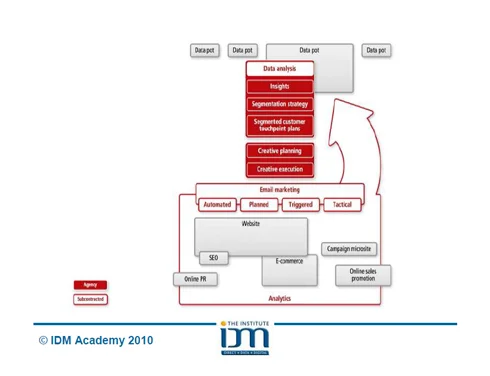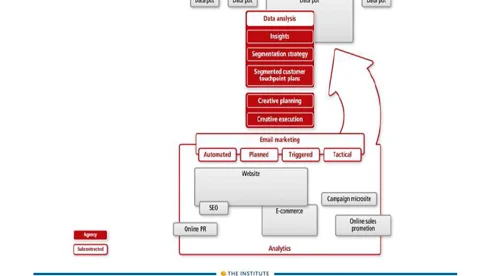I was at ad:tech last week, and saw Felix Velarde's presentation, 'eCRM strategy made simple' (the slides for which are linked here from the IDM website).
Without wanting to gush too severely, I still have to say that the pres was pretty inspirational; which is why I'm summarising some of it here. Since the PDF is publicly available, I've reproduced a couple of Felix's slides (which hopefully is cool!).
eCRM is electronic customer relationship marketing. (Thinking about it now, suddenly I realise what a silly phrase 'customer relationship marketing' is. I know we have B2B, but still, how else do you market if not with relation to your customers? Anyway.)
Felix started by referring to a condition common amongst lots of client organisations: loads of data, describing all sorts of different things, but in as many different separate places. Email lists. Email performance. Organic search reporting. Online 'buzz'. User-generated content on your own web sites. Web analytics relating to your own web sites. Your e-commerce or revenue database. Loyalty card data. Customer profiling. Call centre....
You can do so much more with all this varied data when you bring it together. It's a 'holy grail': the 'single customer view'; one, combined database, whose value is a million times more than the sum of its parts.
With a bit of work (and sometimes, I suspect, some changes to the way you collect your data), you can do a lot to combine these data sources. You can also introduce mosaic (i.e. Experian's geodemographic) profiling, and so you can begin to segment your database of customers through a really pretty richly informed view of their likely attitudes and behaviour. You can test your segments against the same in your offline sales data, and so be more confident that your understanding of these different segments is sensible.
[A quick note for paranoid people: it's okay. Nobody cares what your name is, or who you, specifically, are. This is not creepy, it's useful. Understanding an audience means also knowing who not to market to. Who knows, we might all just start seeing helpful advertising.]

Once you know who your audience is, then you can begin to devise a strategy for helping your different types of audience to research, and then eventually purchase; and to be retained, and even perhaps evangelise for you.
This plan can guide all your marketing activity: creative design, messaging, media buying, delivery, optimisation. Excuse the cliché, but this truly can be everyone singing from the same hymn sheet.
And the part I really love is this: it's not just about planning or reporting; it's about dynamically-optimised delivery. The same data sources that informed your planning in the first place, will continue to provide a view of your audience. You keep each customer's record updated with the most appropriate segment definition, and you can trigger emails to them as they graduate from one segment to the next. The result is the automatically-delivered ads and content that will most of all appeal to your customers, next.
Felix is MD at Underwired; they've built a website for McCain that he claims is dynamically optimising its own content, within three clicks of a visit, according to each user's classification and behaviour as it corresponds to a segmentation scheme. I'm not sure though. It just offered me a coupon for hash browns, but everyone loves hash browns, right?
Does anyone else think this stuff is cool? If behavioural advertising works, but it needs to start offering more value to consumers, then it just needs to get better, right? Like this?
